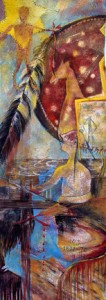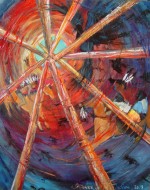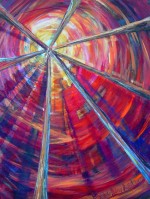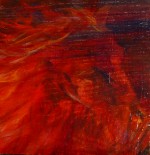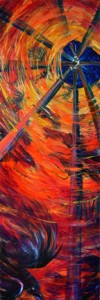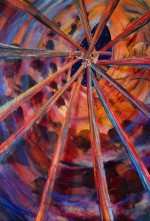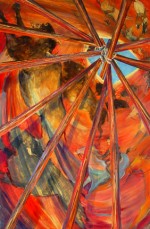Thunderbird Symbolic Ghost Dance
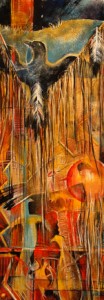 “Thunderbird Symbolic Ghost Dance” 11 x 30” WC & Gouache on Paper
“Thunderbird Symbolic Ghost Dance” 11 x 30” WC & Gouache on Paper
The Thunderbird is a powerful symbol in Native American culture. It appears repeatedly in ceremonial objects. Its image is also commonly found carved into stone, known as petroglyphs. The legendary Thunderbird ruled the skies, and was credited with thunder and lightning. Its powerful presence was feared and revered.
In 1890, the Plains Indians ceremonially tried to resurrect their way of life through a movement known as The Ghost Dance. It was also believed that the Ghost Dance would bring their relatives back from the dead. This ceremony drew Indian tribes together and was quickly outlawed by the United States. Regardless, the Ghost Dance was conducted. For this ceremony, participants wore specially designated ghost dance shirts, believed to hold great power, and render the wearer impervious to bullets. Such a shirt, adorned by the powerful thunderbird, is depicted at the top of the painting, The Government’s efforts to to stop the Ghost Dance once and for all, led to the infamous Wounded Knee Massacre on December 29, 1890. This horrendous act, sadly, did end the resistance, as it annihilated 145 Lakota men, women and children.
Over a hundred years later, we can look back at the Ghost Dance, and wonder why people ever would have believed in such a thing as the Ghost Dance. But, it was a desperate time, the people were displaced from all they knew. Also, consider the Christian religion which was being preached to them at every opportunity. It told of a loving God, sent to earth, and raised again from the dead to save all…
